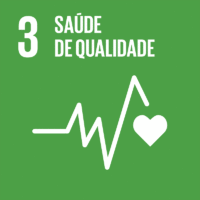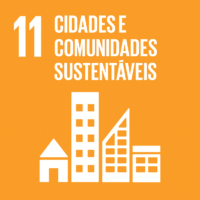Ciência_Iscte
Publicações
Descrição Detalhada da Publicação
A model for Evaluating Older People Perceptions on the Outdoor Built Environment
Título Revista/Livro/Outro
UniverCidades 2023
Ano (publicação definitiva)
2023
Língua
Português
País
Portugal
Mais Informação
--
Web of Science®
Esta publicação não está indexada na Web of Science®
Scopus
Esta publicação não está indexada na Scopus
Google Scholar
Esta publicação não está indexada no Overton
Abstract/Resumo
As societies grow older and live longer, the request for cities to adequate the public space and attend appropriately older people emerges is a clear call to a forthcoming future. In 2050, the UN (UNFPA, 2019) predicts that 16% of the global population will be over 65 years old, contrasting to 9% in 2019. In Europe, the ageing process is a trend and data show that people over 65 years in 2021 represented 19.7 % of the total population and will grow to 28.5% in 2050.
In addition to this, big cities growth is a phenomenon worldwide and is where most of this group will be living. UN mentions that two out of every three people are likely to be living in cities or other urban centres in 2050 (United Nations, Department of Economic and Social Affairs, 2018). As a response, in 2007, UN released the Global Age-Friendly Cities: a Guide (WHO, 2007), with a proposal to engage cities to become more age-friendly, highlighting the needs and opportunities to enhance quality of life as people age.
Unfortunately, there is a lack of studies considering the emotions and behaviours of older adults regarding the use of outdoor spaces. Research technics such as post-occupancy evaluation, while valid, come late since they only enable to change what was already built and not performing well.
Our research questions are the following:
How to map the emotions that older people experience when using the outdoor built environment in order to make a user-centred architecture?
What are the characteristics of the outdoor built environments that make them more comfortable and walkable for older people?
The goals of this research are:
Identify modes to test the perceptions of older people while walking in an outdoor built environment.
Identify patterns of relations between types of the outdoor built environment and older peoples´ perceptions.
Define a measurement scale for assessing the quality of the outdoor built environment for older people.
Our research analyses the perception of older users considering outdoor public spaces and the architectural features that encompass the complex urban fabric in cities. The city of Lisbon will be used as a case study.
Our methodology is based on a previous scoping review examining the perceptions (Figueiredo et al., 2022). Findings presented that the most studied basic and general perceptions from older adults were fear, safety, wellbeing, and social cohesion. Moreover, considering the spatial perception: walkability, mobility and accessibility were the most mentioned perceptions. Active mobility and related devices, as bikes and scooters are present on the studied environments and are observed on studies (Brüchert et al., 2022; Koszowski et al., 2019; Marquet & Miralles-Guasch, 2015).
The urban design from Public Space Manual (Câmara Municipal de Lisboa, 2015), a Lisbon City Council publication is a reference used on the study, as it is a guide with recommendations and good practices and supports the design and construction of public spaces.
To better identify the needs of older adults when experiencing the outdoor public spaces, we pursue to create an interactive experience, using a digital narrative, where the older person will be able to navigate a virtual environment and convey her/his emotions and feelings. This narrative will be based in the city of Lisbon, considering the architectural characteristics such as pedestrian and cycling circulation spaces, streets, crosswalks, bus stops and urban furniture, as well as the pedestrian mobility and the interaction of users with the street elements and vehicles. The experience will use 360º videos and images as an immersive media. Older people will experience these environments by using Head Mounted Displays or a Powerwall. Such a media was also used in studies, such as (An & Yoshida, 2018; Higuera-Trujillo et al., 2017; Llinares et al., 2020; Mouratidis & Hassan, 2020).
During and after the experience, participants will answer questions about the perceptions such as walkability, fear of falling, safety, and wellbeing. The questionnaires and the interview during and after the experience will evaluate perceptions of: fear of falling, quality of design of public space, walkability, wellbeing, ageism, sense of presence (Usoh et al., 2000), pleasure, arousal and dominance (Mehrabian & Russell, 1974).
Pedestrian and cycling circulation spaces, as well as roads, streets, and presence of cars (in movement or parked), shared paths, urban furniture and greenery are features to be evaluated in order to create an instrument to evaluate the quality of the built environment on an older people perspective.
Our research is expected to deliver a model for evaluating older people’s perceptions on the outdoor built environment that can be used by stakeholders, such as decision-makers, to evaluate their public areas. With such an approach, also designers and can use this instrument to assess the suitability of design solutions.
Agradecimentos/Acknowledgements
--
Palavras-chave
Space Perception,Architecture,Virtual Reality,User-centred architecture.
Classificação Fields of Science and Technology
- Psicologia - Ciências Sociais
- Artes - Humanidades
Registos de financiamentos
| Referência de financiamento | Entidade Financiadora |
|---|---|
| UIDB/151027/2021 | FCT |
Contribuições para os Objetivos do Desenvolvimento Sustentável das Nações Unidas
Com o objetivo de aumentar a investigação direcionada para o cumprimento dos Objetivos do Desenvolvimento Sustentável para 2030 das Nações Unidas, é disponibilizada no Ciência_Iscte a possibilidade de associação, quando aplicável, dos artigos científicos aos Objetivos do Desenvolvimento Sustentável. Estes são os Objetivos do Desenvolvimento Sustentável identificados pelo(s) autor(es) para esta publicação. Para uma informação detalhada dos Objetivos do Desenvolvimento Sustentável, clique aqui.

 English
English



